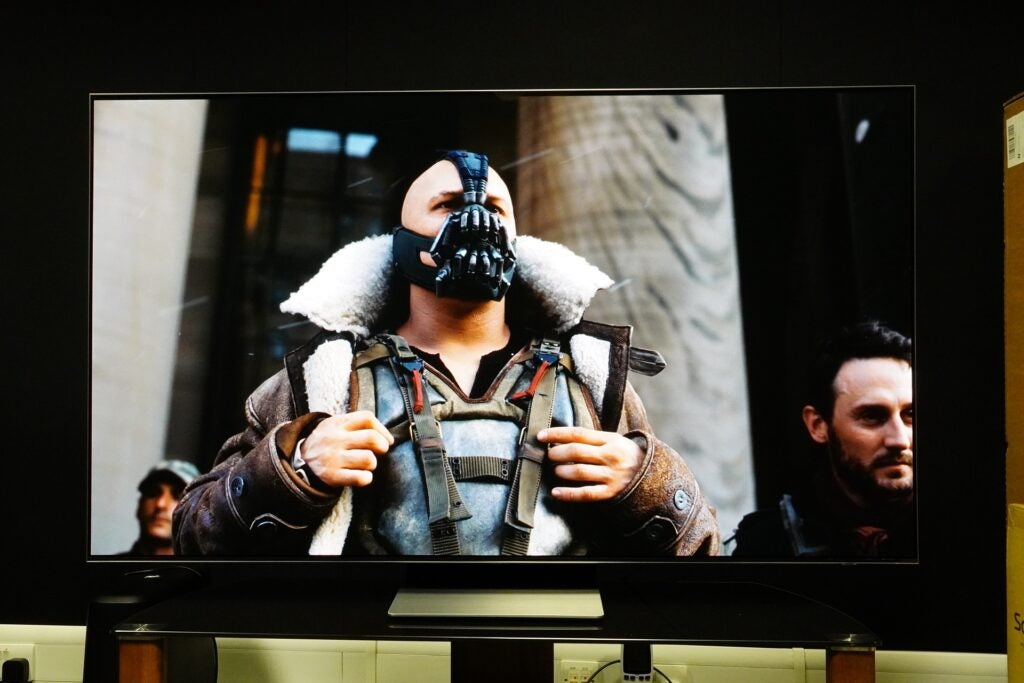OPINION: I’m not one to deal in doomsday scenarios – I like to stay positive – but I think Samsung’s QD-OLED technology could be in a spot of bother for 2025.
Why? It has nothing to do with the technology itself, which after the first few shaky generations, evolved to become our best TV award winner of 2024. It has to do with the rumours that came out of CES 2025, which rather than disappearing like a ripple only seem to be growing.
It’s the rumour that Sony might be ditching QD-OLED for LG’s RGB Tandem OLED display.
Now, this would be a big thing in the TV industry, because QD-OLED’s raison d’etre was to provide competition to LG; raising the level of brightness and colour performance beyond what WOLED (industry speak for traditional OLED displays) were capable of.
But if no one is interested in your displays, you’re not providing much competition.
QD-OLED has its wings clipped
When the rumour was first floated, I thought “nah” because based on early briefings, Samsung Display’s QD-OLED and LG Display’s RGB Tandem seemed to be on even footing. Apparently, they can both hit 4000 nits (in specific circumstances), while energy efficiency of both panels has improved, as has colour performance.


After launching the A95K and A95L, what would persuade Sony to jump ship for what we’re all assuming is going to be the Bravia 10? Could we all be wrong, and whatever Sony’s 2025 flagship be an RGB Mini LED?
I think another Mini LED is unlikely given how much was invested into the Bravia 9’s backlight technology. To replace it with another, different technology, less than a year on would seem wasteful. That’s not really in Sony’s release cycle considering its TVs are in the thick of it for at least 18 months before a replacement pops up. As the A95L launched towards the back end of 2023, now would make sense for a successor.
And to go back to what would persuade Sony to make the switch, if it has done that, the answer is I’m not sure.
Sony has never has never been interested in the brightness wars. Ask them about it and you will be met with an awkward (but amusing) silence. They’ve always been about colour range and processing. If they have embarked upon the RGB Tandem ship, it must be because they’ve been convinced it has greater potential for the PQ wizards at Sony to work with. That’s the only reason I can think of.
QD-OLED will keep going
And to circle back to Samsung, would (if) Sony jumping ship be the death knell for QD-OLED? No, it’ll still keep plugging along but it should be a worry that QD-OLED hasn’t infiltrated the TV market as I imagine they would have hoped.


After all, back when QD-OLED was first mooted, it was rumoured to be floated to Panasonic (you can guess how that went); but also to Philips – apparently at a discounted price (you can guess how that went too). Both Hisense and TCL are fans of Mini LED, so I can’t see any interest in QD-OLED from them.
It’s complicated by the fact that Samsung buys OLED screens from LG Display for certain models and sizes, which only serves to enrich LG’s dominance in the OLED TV market.
Similar to 8K, QD-OLED doesn’t look like it’ll catch fire in terms of popularity. But this is Samsung – they sell the most TVs, and have been at the top of the heap for well over a decade. This is a disappointment in the sense that they won’t be able to sell more.
But it’s not just about ‘conventional’ TVs for QD-OLED. It’s racking up sales in the gaming monitor market as that grows in popularity, and at sizes that Samsung struggles to produce TVs in (from 27- to 49-inches). QD-OLED isn’t going anywhere anytime soon.
So if it’s true that a Sony RGB Tandem OLED is on the way, LG will have a Joker-sized grin on its face. It has dominated the OLED TV market for over 10 years and looks like continuing that dominance. And who knows, Sony’s potential rejection might spur Samsung on to even greater things with QD-OLED. It’ll be interesting to see how the two technologies face off once they start going on sale later this year.




